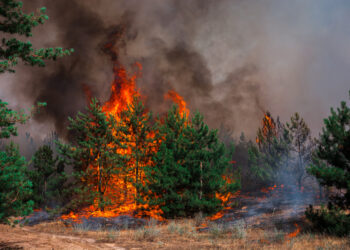By Joseph T. O’Connor EBS Contributor
In mid-February, a north wind ushered in bone-chilling temperatures from Canada and the mercury in Big Sky dipped to 17 below zero the morning of Feb. 20. In West Yellowstone, residents awoke to a crisp minus 38 that shattered the previous record low for that day of minus 2.
Meteorologists warned that frostbite could affect exposed skin in less than 20 minutes, and cautioned pet owners to keep their animals inside or, if necessary, outside for limited time periods.
If our pets can freeze overnight in the deep snowdrifts, how does Montana’s abundant wildlife survive the hypothermic winters year after year? And what are some techniques these intrepid animals utilize to make it in the wild?
Dr. Lance McNew, assistant professor of wildlife ecology and director of the Wildlife Habitat Ecology Lab at Montana State University, says it depends on the species but many animals become experts in their respective environments. It’s Darwin’s theory of natural selection, and the ones that don’t adapt typically don’t survive.
“We are beginning to understand that most species are masters at identifying and using the thermal landscape, as well as the vegetative one,” McNew wrote in a Feb. 26 email. “Winter is a tough time for wildlife in our neck of the woods.”
Having extensively studied game birds in their habitats, McNew says many species of grouse, for example, only expose themselves to the winter elements for short amounts of time during feeding, and use snow to their favor. Just below the snow’s surface, the “subnivium” layer actually traps heat and keeps certain animals, including grouse, warm as they wait out the freeze.
“They bury themselves in the snow during really cold temps,” McNew said, “effectively creating a makeshift igloo that keeps them (relatively) toasty. They fill their crops and then return to safe cover to process that food into energy.”
In Montana and the Greater Yellowstone Ecosystem, bears, marmots and some birds stave off Old Man Winter through varying degrees of hibernation, during which their heart rates and metabolism slow. Others, including elk, pronghorn and bighorn sheep, migrate to lower elevations. The rest, including the indomitable mountain goat, which grows a double layer of white fur in winter to insulate from temps as low as minus 50 F, must adapt to the frozen country.

Winter survival in the Greater Yellowstone
American bison: The mountains surrounding Yellowstone National Park trap frigid air inside the regional caldera. Fortunately, the park also has a cold-weather antidote: hot springs. Bison gather near these super-heated geysers, which are warmed by subsurface geothermal energy sources. The warm earth allows bison to conserve energy for extended periods of time, but can also prove fatal if these 2,000-pound behemoths slip into the pools. Bison also grow a thick coat of hair for the winter months and utilize their huge heads to plow snow away from the vegetation they eat beneath the surface.
Ermine: One of eight members of the weasel family found in the Greater Yellowstone, the ermine is more than just a cute little beast. It’s a cold-weather expert. A mustelid and cousin to the otter and wolverine, the ermine has a metabolism twice that of other animals their size, meaning they must remain constantly active—and eating—to survive harsh winters. They are active hunters, even in the coldest weather, and remain so throughout the winter months, when their coat changes from brown to a camouflaging white. Their slender bodies allow them to move quickly through tunnels just below the snow surface, where they track mice, chipmunks and other burrowing creatures.
Moose: Weighing up to 1,600 pounds, moose are the largest of all deer species. Their unmistakable racks can grow as broad as six feet and the telltale flap of skin suspended from their chins is known as a bell. In winter, the moose is right at home in the Greater Yellowstone region. All deer, moose included, have hollow hair that protects them from the frigid air. The moose’s massive hooves spread when it steps down, mimicking snowshoes, and its long legs can rotate in all directions to ward off predators and help them navigate in deep snow.
Black-capped chickadee: The black-capped is one of a number of chickadees that live in Montana year round. Weighing in at a trim half-ounce, this feathered phenom is a master at winter survival. According to McNew, the chickadee has a countercurrent heat-exchange system that warms blood coming from its extremities. All day it gorges on seeds—up to 60 percent of its body weight—and at night performs an amazing feat: The chickadee lowers its own body temperature by as much as 15 F, achieving a state known as “torpor” that preserves energy. “They not only seem to survive in the cold,” McNew said, “but they seem to like it.”













